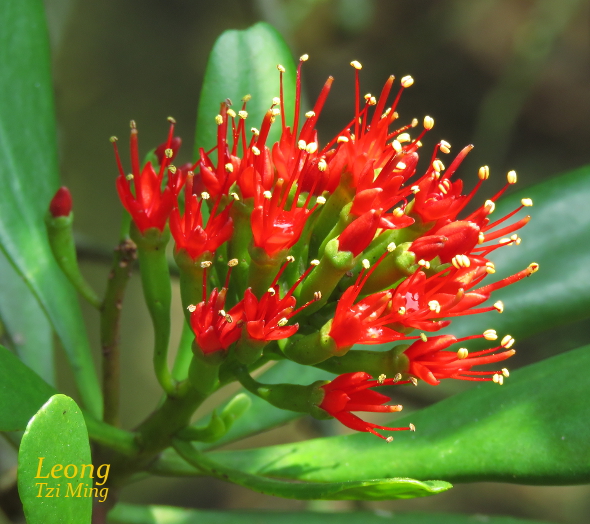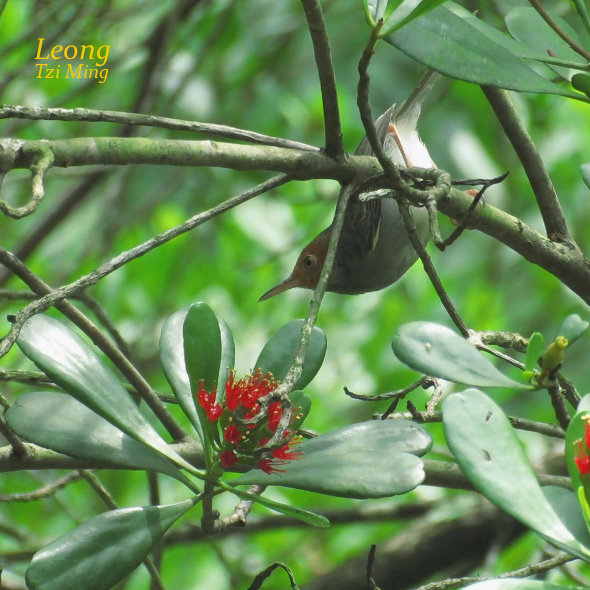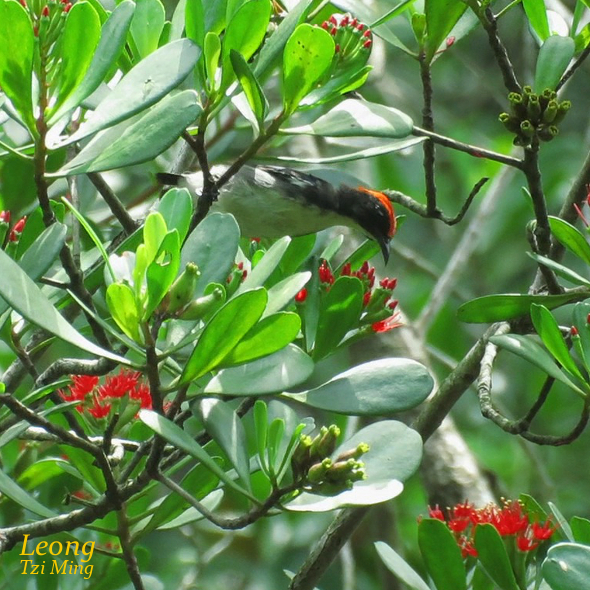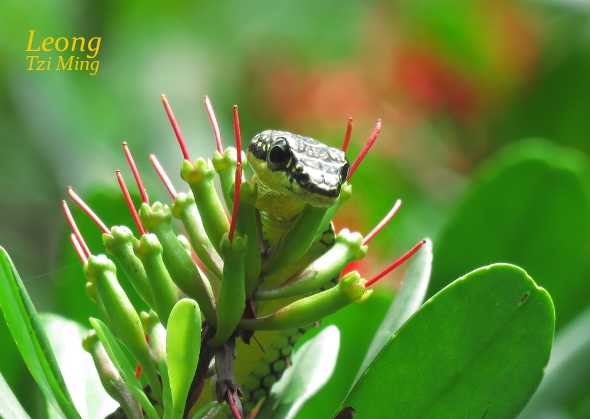
“Whenever the fiery flowers of Teruntum Merah (Lumnitzera littorea) are in blossom (above), they add a splash of enticing red and ephemeral vibrancy to the back mangroves.

“Like a moth to a flame, a handful of bird species finds these flowers simply irresistible. Avian visitors include the Ashy Tailorbird (Orthotomus ruficeps) (above) and the Scarlet-backed Flowerpecker (Dicaeum cruentatum) (below).

“Video clips of their brief visits may be previewed here:
“Other species observed to seek out the sweet nectar include the Olive-backed Sunbird (Nectarinia jugularis) and the Brown-throated Sunbird (Anthreptes malacensis).

“Despite the profusion of flowers, the birds do not linger for long. Some even seem nervous, perhaps wary of potential predators. When I eventually spotted a Paradise Treesnake (Chrysopelea paradisi) coiled in ambush on the same tree (above), I realised why the birds were so jittery.”
Dr. Leong Tzi Ming
Singapore
4th December 2017








